Introduction.
This post is an addendum to the post on; Stawell gold mining area; Mine Scale Exploration targeting using EagleEye enhancement of magnetics in plan and 300 Magdala cross section (https://www.geotreks.com.au/work/projects-studies/stawell-gold-mining-area-mine-scale-exploration-targeting-using-eagleeye-enhancement-of-magnetics-in-plan-and-300-magdala-cross-section/).
In a recent post on Project X in NSW (https://www.geotreks.com.au/work/giant-ring-structures/ australia/structural-enhancement-eagleeye-system-magnetics-plan-and-section/) there was a strong hackly/stippling texture following structures in the central area of high magnetics (figure below).
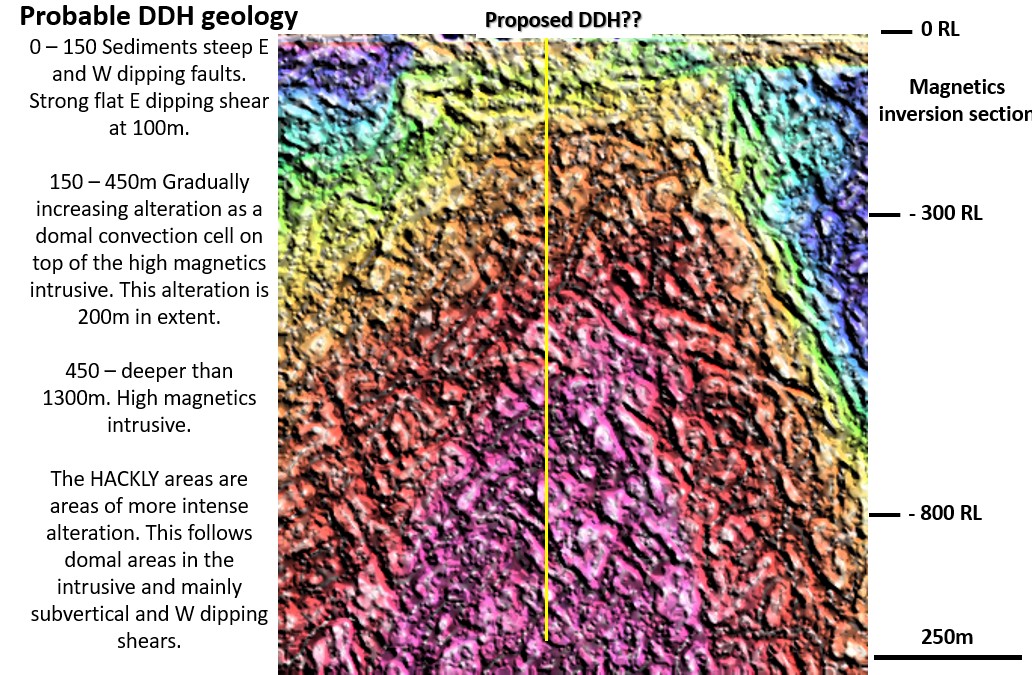
This reminded me of the structure at Stawell Victoria and so I examined the section below to see what exactly the stippling was associated with.
I helped rediscover and worked in Stawell for six years and did my masters study on the evolution, structural geology and mineralisation of the Magdala and Wonga mines.
I researched the regional and local structures intimately and so can evaluate whether the structures I observe in my EagleEye images are real or not.
The Stawell mine section was from a 3D magnetic inversion model on Magdala, Section Line 254.
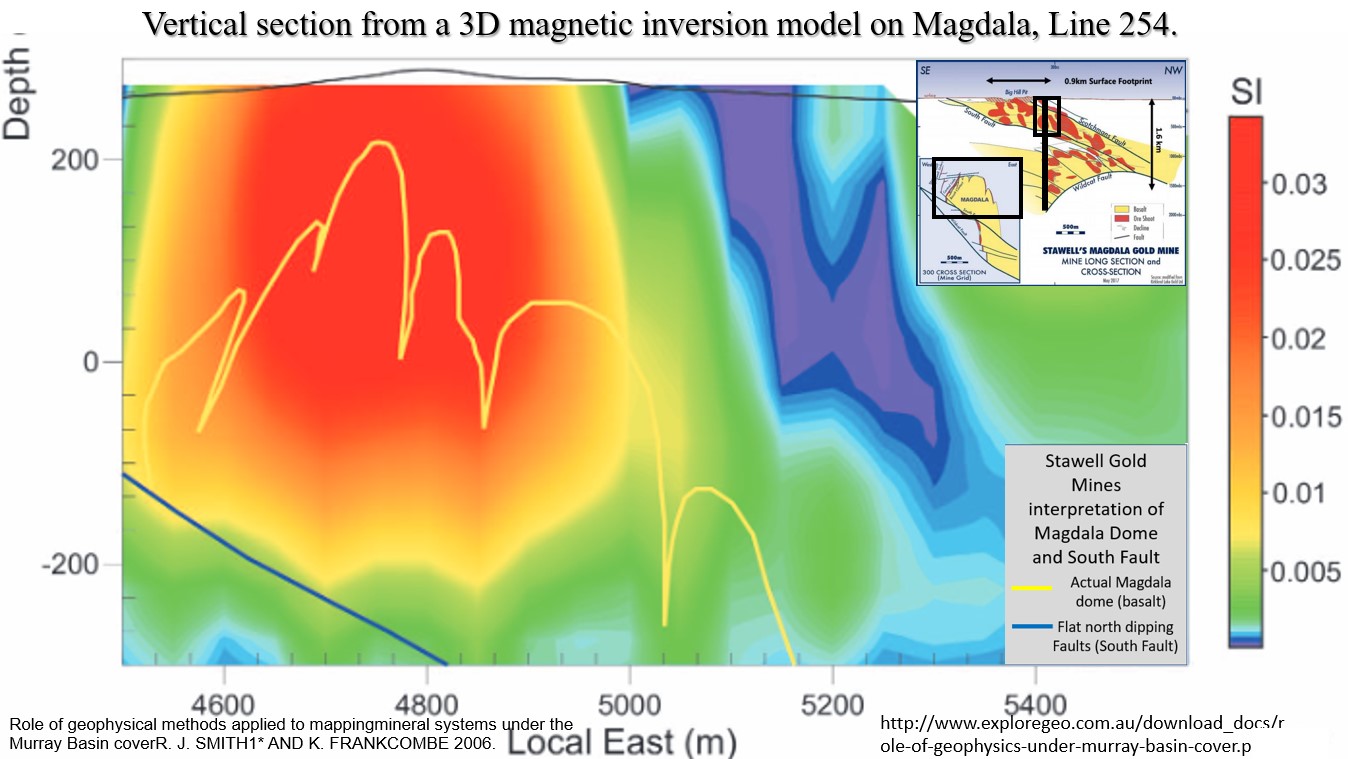
Stawell is like WA, all undercover, but I have been able to define the Magdala and very high-grade flat reef structures and structures. I can do this in plan and section even down to the mine scale (https://www.geotreks.com.au/work/projects-studies/stawell-gold-mining-area-part-4-mine-scale-exploration-targeting-using-eagleeye-enhancement-of-100-times-magnification-of-magnetics-at-the-magdala-mine/).
The figure below shows the structural deformation system from my MSc mapped out correctly in the EagleEye image.
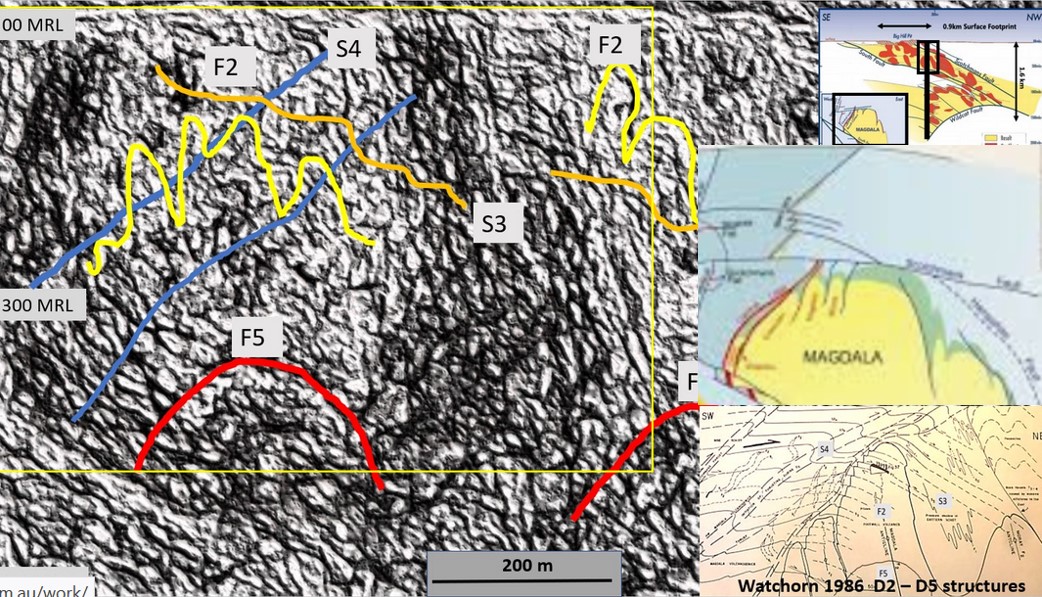
This figure shows the excellent correlation between the actual structures and the EagleEye structural geology.
The images below were generated using my more recent EagleEye system. They retain the magnetic intensity colours and define the structures more clearly. One feature I can amplify is the hackly areas in and around the faulted, higher tectonic areas. These, I believe, represent the higher variability of the magnetics within these areas and thus are a valuable exploration targeting tool.
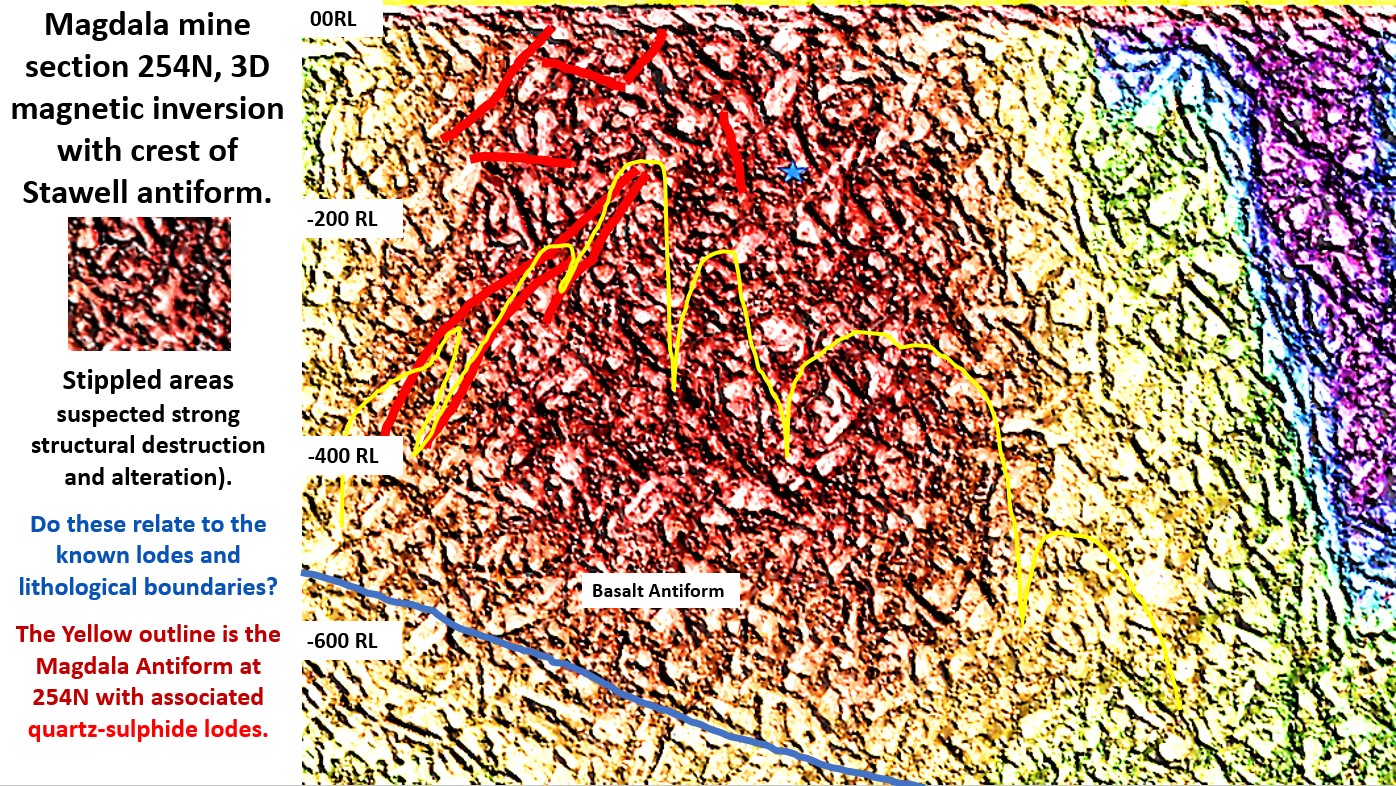
The hackly areas on the EagleEye image above correlate with known mineralisation, alteration or higher grade metamorphism and metasomatism around the Magdala Antiform. All these contain more sulphides than the surrounding stratigraphy. This ultra-detailed information is extremely valuable information for exploration targeting.
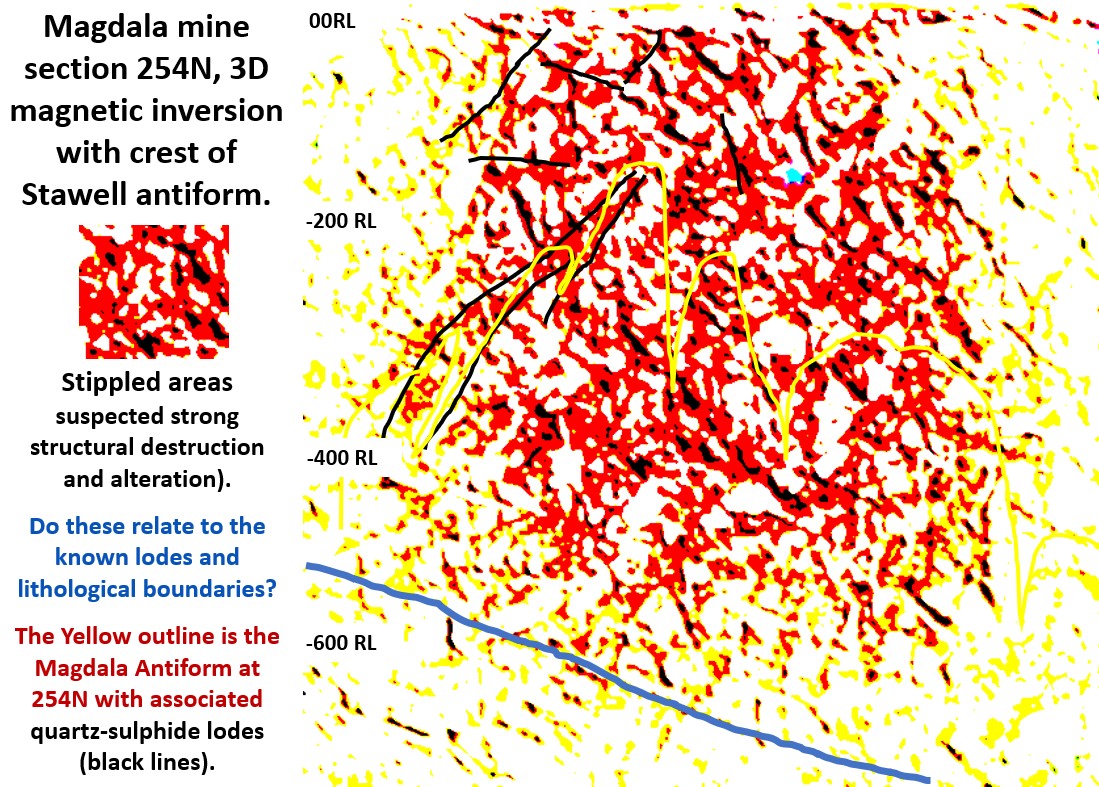
The above image was adjusted so that the hackly areas are represented by red. The lodes and the South Fault zone (blue line and below) can be seen to follow and cut off the hackly areas. The red hackly areas encapsulate the Magdala basalt and the very altered Mine chlorite schists – and all lodes.
This exercise follows research on a NSW project where I suspect the hackly areas represent the metamorphosed mineralised core of an intrusion. The following figure shows the good correlation between the two areas.
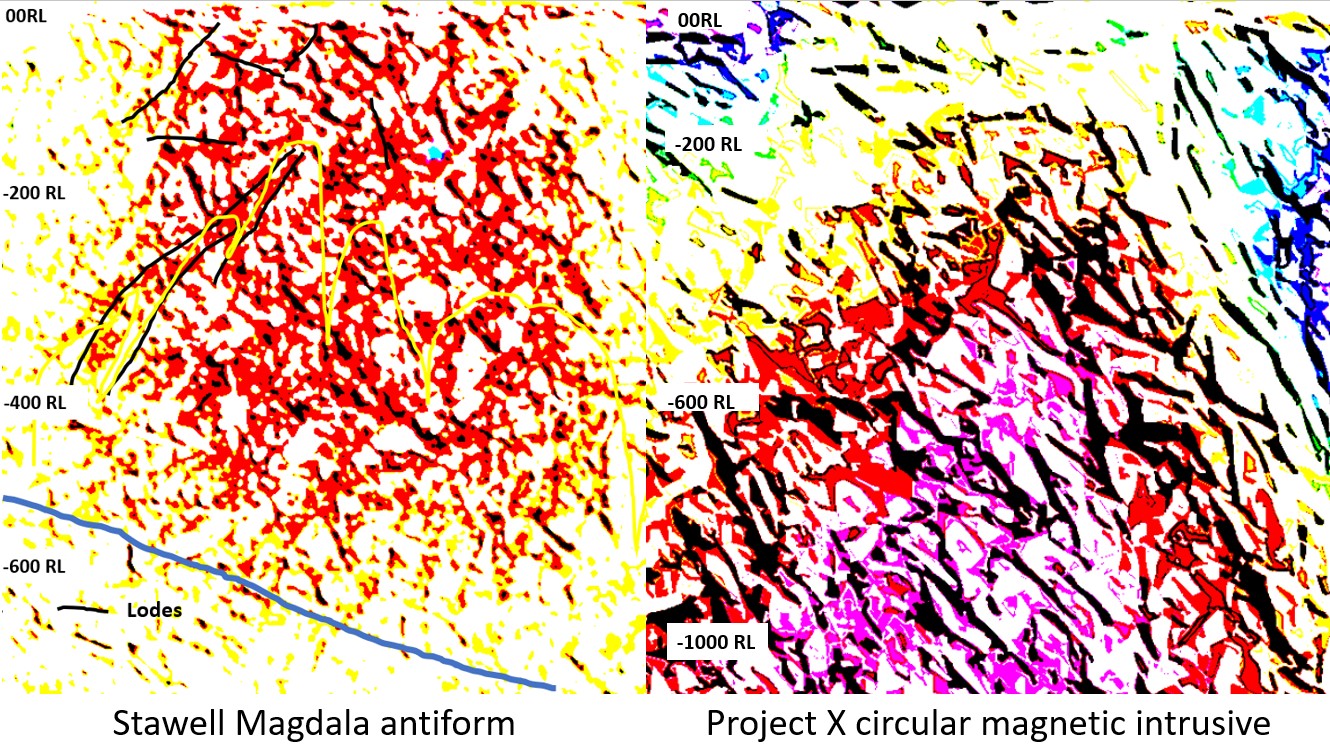
The good correlation of the two areas suggests that my Stawell modelling could be applicable to the NSW project. In fact the NSW project has better differentiation of the magnetic wavelengths, which, if applied to Stawell would better highlight the lodes.
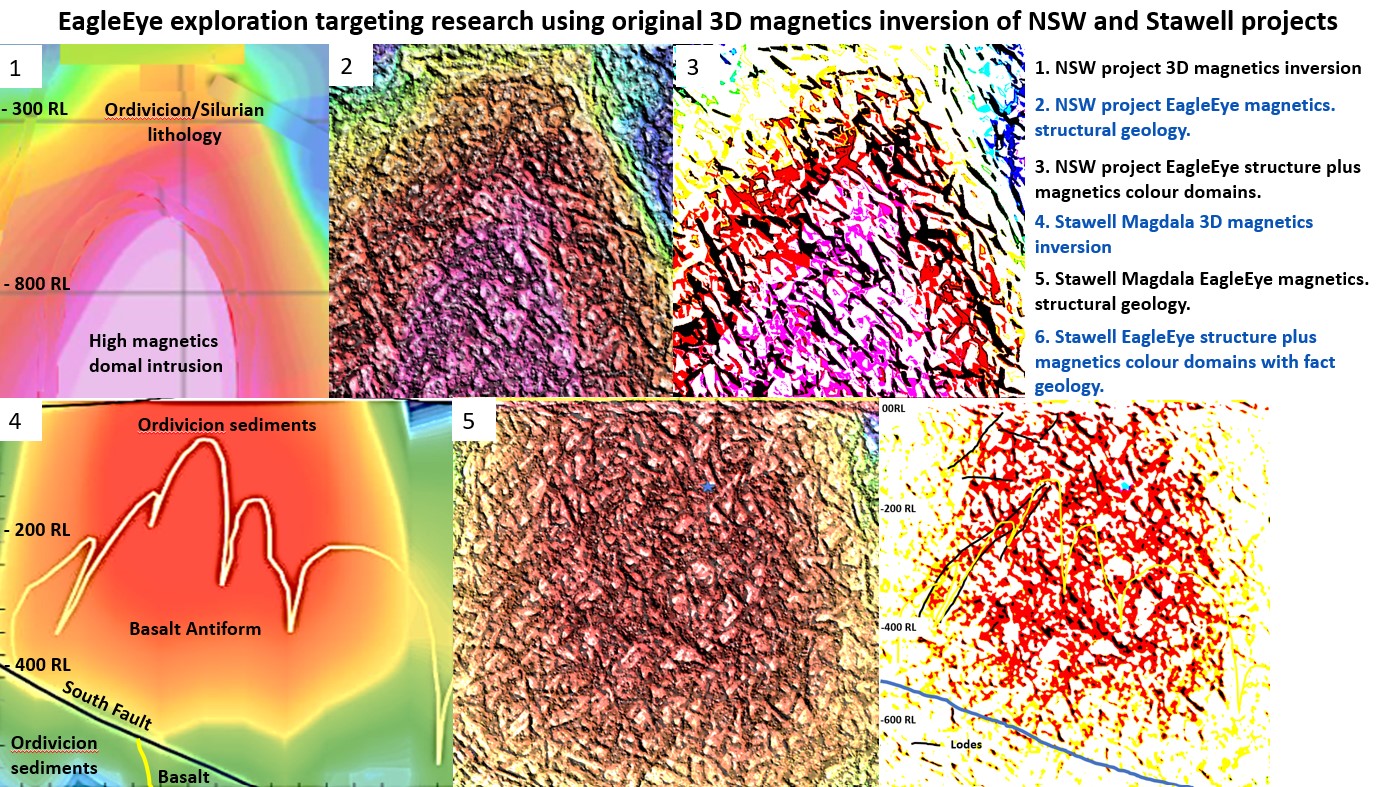
If the EagleEye structural enhancement is correctly defining areas of higher more erratic sulphide (or more magnetic areas) then the owners of these projects should be looking in the red areas on the strongest black structures. There you are guys – go for it.
This exploration targeting method should be investigated by the owners of both the Stawell and NSW projects!
I think it should work on most lode types containing more magnetic material than the surrounding lithologies – which is most orebodies!
So if anyone has the magnetics, gravity, EM, TEM, TM, IP, Landsat (any data images) of their project I could run the same EagleEye template on it to give you similar images to the above which you can then compare with known areas.
To put it bluntly you’ve got rocks in your head if you don’t use the latest technology to get the best results from your limited budgets now that AI, Crypto and Tech stocks have siphoned our mining and exploration budgets away from us 🙂
Cheers
Bob
